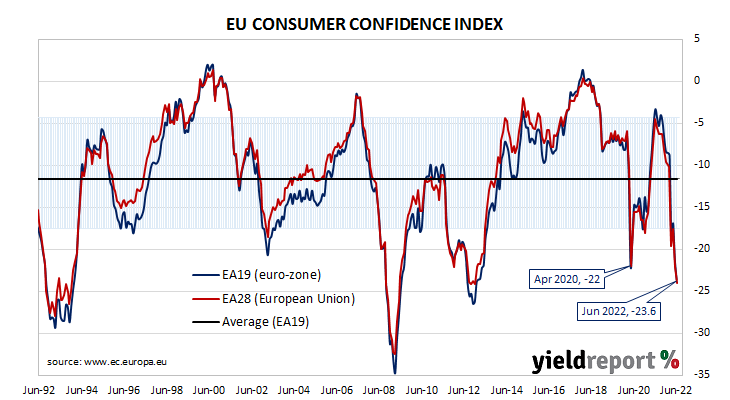Summary: Euro-zone households more pessimistic in June; Consumer Confidence Indicator down 2.4 points; well below long-term average, lower bound of normal readings; euro-zone sovereign bond yields lower.
EU consumer confidence plunged during the GFC and again in 2011/12 during the European debt crisis. After bouncing back through 2013 and 2014, it fell back significantly in late 2018 but only to a level which corresponds to significant optimism among households. Following the plunge which took place in April 2020, a recovery began a month later, with household confidence returning to above-average levels in March 2021. However, recent readings have been low by historical standards.
Consumer confidence deteriorated in June according to the latest survey conducted by the European Commission. Its Consumer Confidence Indicator recorded a reading of -23.6, down from April’s figure of -21.2. This latest reading is well below the long-term average of -11.6 as well as outside the lower end of the range in which “normal” readings usually occur.
Ray Attrill, Head of FX Strategy within NAB’s FICC division, noted the reading was “just beneath the worst levels seen in the early stages of the pandemic.” He attributed the result to “soaring inflation and the knock-on effects from the Ukraine war…”
Sovereign bond yields dropped in major euro-zone bond markets on the day. By the end of it, the German 10-year bund yield had shed 14bps to 1.63% and the French 10-year OAT yield had lost 15bps to 2.17%.


